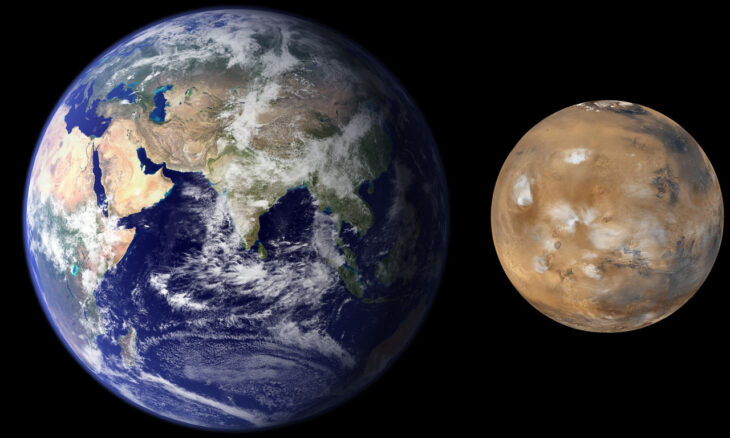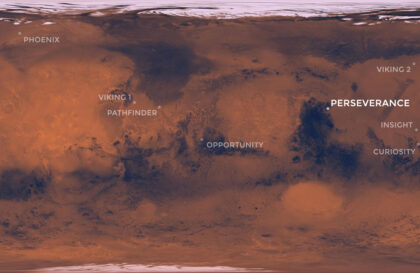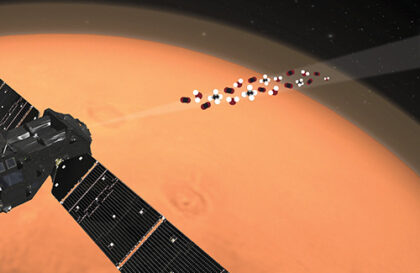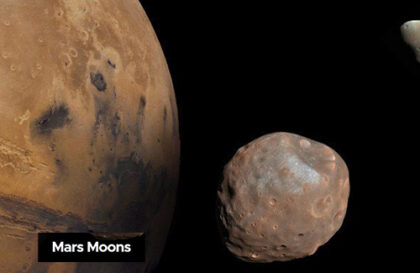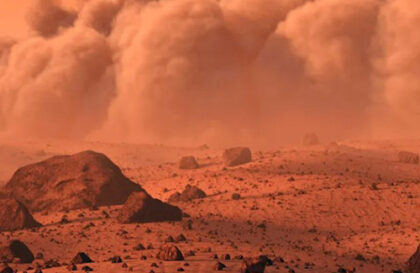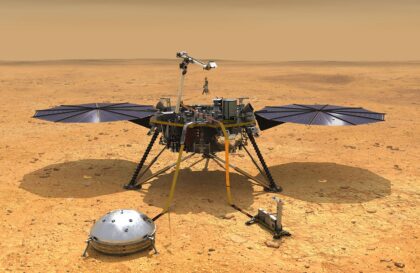Earth:
Weight (m) 5.9726⋅1024 kg
Average density (ρ) 5.5153 g/cm³
Average radius 6371.0 km
Mars:
Mass (m) 6.4171⋅1023 kg or 0.107 earth
Average density (ρ) 3.933 g/cm³ or 0.714 Earth
Average radius 3389.5 ± 0.2 km or 0.532 Earth
Mars’ mass, 10% that of Earth, was a mystery. Standard accretion models predict that Mars should be the same or larger than Earth, which does not match observations. This problem remained unsolved for a long time. Still, according to Levison, a Southwest Research Institute Office of Planetary Sciences scientist, they now have an answer based on the planet formation process.
Using a new modeling technique where planets form from “rocks,” scientists from the Southwest Research Institute were able to explain the smaller size of Mars compared to Earth. This method also helps to understand the rapid formation of Jupiter and Saturn. Hal Levison, author of the study, emphasized that this numerical simulation reproduces the structure of the inner Solar System.
Levison and colleagues from SwRI’s Office of Planetary Science presented new calculations about the growth and evolution of a planetary system. They showed that the inner Solar System structure results from viscous-stirred pebble accretion (VSPA). In this process, the dust turns into “pebbles” that can gravitationally collapse and merge to form asteroids, which, under certain conditions, can quickly grow to the size of a planet. Certain conditions are when the so-called “pebbles” line up along the orbit under aerodynamic drag.
Venus, Earth and Mars. Credit: NASA
New models indicate that not every asteroid can grow efficiently due to different aerodynamic drag in different places in the solar system. For example, the giant asteroid Ceres (about 600 miles across) would become a planet in the orbits of Earth or Venus. However, objects near Mars’ location encounter fewer rocks, which explains Mars’ smaller size. Effective growth occurs only in the current areas of Earth and Venus.
This model sheds light on the past of the asteroid belt. While old models argued that the original asteroid belt had the mass of several Earths and planets formed there, new data suggests that there were no large asteroids similar to modern ones in the beginning, and planets could not have formed there.
This research by Levison and team complements a recent report by Kretke and Martin Duncan of Queen’s University, which showed that pebbles could form the cores of giant planets and explain the structure of the outer solar system. Together, these works create a vision for the solar system’s development based on one key process.
Banner image: NASA/JPL/MSSS
Image credit:
https://exoplanets.nasa.gov
https://solarsystem.nasa.gov
